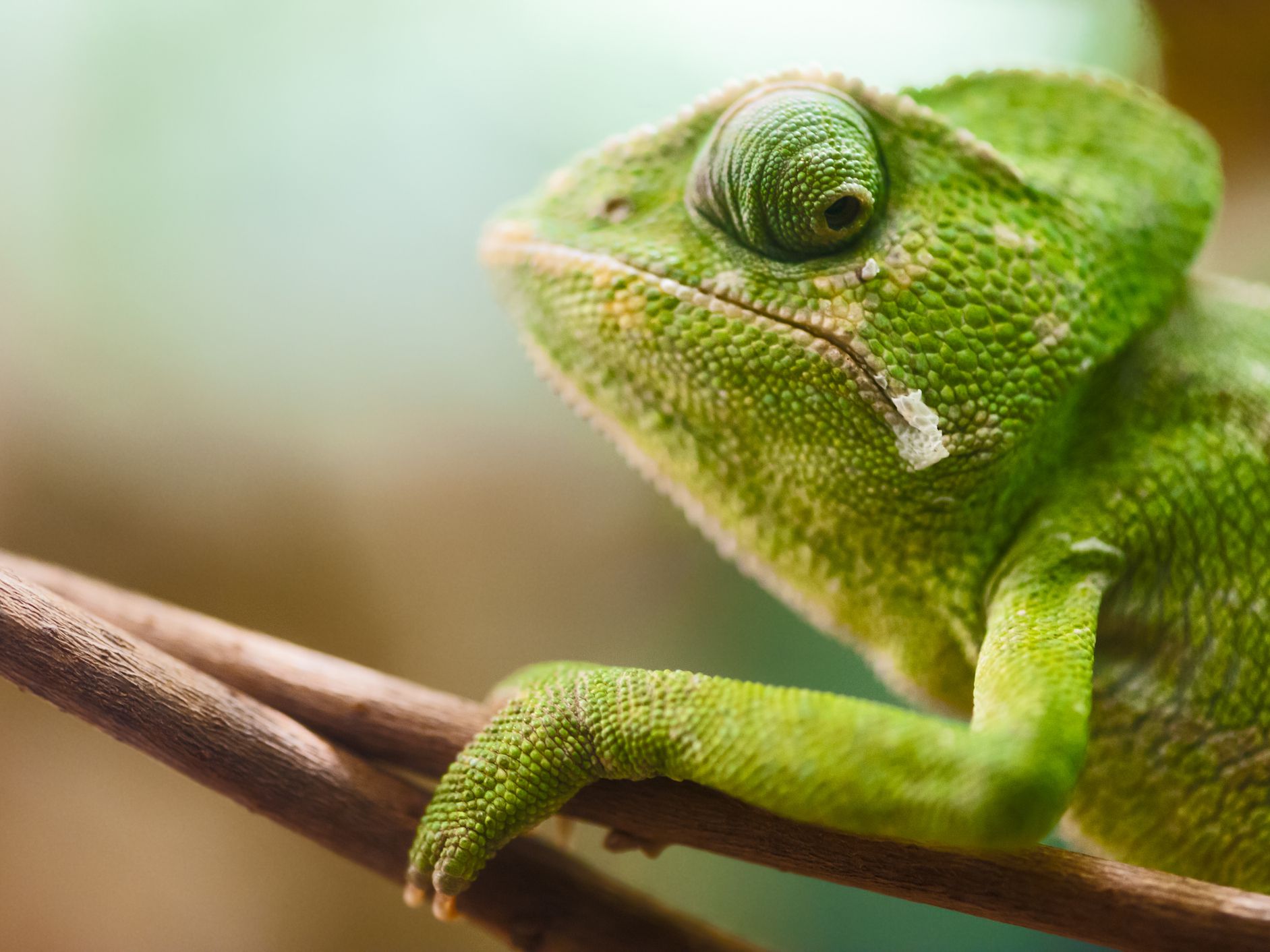Chameleon Care Sheet
Habitat
Almost half the known species of chameleons live in Madagascar. The rest reside in Africa, Spain, Portugal and Asia in rain forests, savannas, and semi-deserts.
Housing
Chameleons are arboreal, meaning they live exclusively in trees. They need cages with ample foliage for climbing and privacy, and the enclosure must be quite large. For the larger chameleons, a cage measuring 3 feet by 3 feet by 4 feet tall should be provided, but the more space the better.
Substrate
The best substrate for a chameleon is a tropical terrain coco husk brick. If a particulate or natural substrate is used avoid the following: beddings with small particles such as cat litter, sand, and wood chippings. Excessive moisture trapped in the substrate can promote the growth of bacteria and fungus.
Heating
Chameleons are ectothermic, and need a temperature gradient to thermoregulate and control their own body temperature. This means you need to provide a hot and cool side to your enclosure. All the lighting and heat elements should be on one side and the other will be on the cool side. This way your chameleon can move back and forth between the different temperatures depending on its needs. If you have a tall enclosure, your temp gradient will usually be top to bottom instead of side to side.
A basking area of 85-95 degrees should be provided. The rest of the enclosure can be in the 72-80 range. Use a good quality digital temp temperature gauge or Exo Terra’s Thermometer. The easiest way to increase the heat in your enclosure is with a ceramic Reptile basking bulb.
UV Lighting
In addition to heat, chameleons need UVB lighting to help absorb calcium and to synthesize vitamin D3. Since they are not out in natural sunlight in our homes, we must provide UVB light (at least 5%) in the form of a special fluorescent bulb designed to produce UVB rays. You will want the Arcadia Euro-Range Forest 5% or Exo Terra UVB 100 variety.
Feeding
Chameleons are mostly carnivorous, which means that they rely on insects or other animals for food sources. They can eat a variety of insects but are fed mostly cricket diets in captivity. However, crickets should not comprise more than 50% of the diet. It is important that crickets and be fed a diverse nutritious diet. They can be fed commercial “gut-loading” food in addition to dark leafy greens (collards, kale, dandelion leaves, mustard greens), oats, broccoli, alfalfa hay, and other fruits and vegetables. Additionally, calcium supplements should be included in cricket’s diet.
Mist your chameleon’s tank, as they drink the drops.
For any further information or advice please feel free to message us on Facebook or contact the store on 01902 494860




